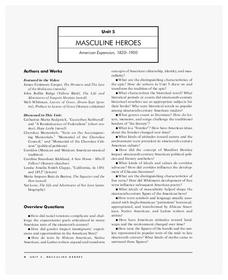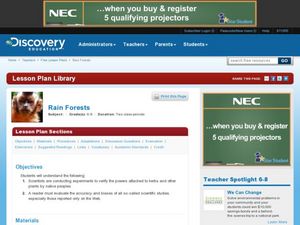Houghton Mifflin Harcourt
One Land, Many Trails: Challenge Activities (Theme 5)
Bring history to life through literature. The first in a series of three challenge activities designed to accompany Theme 5: One Land, Many Trails does just that through unique projects connected to historical fiction and nonfiction...
Annenberg Foundation
Masculine Heroes
What were the driving forces behind American expansion in the nineteenth century, and what were its effects? Scholars watch a video, read biographies, engage in discussion, write journals and poetry, draw, and create a multimedia...
Curated OER
Synonyms
Print this sheet to give your English language learners some practice identifying synonyms. There are six questions listed, and each question has four options. For example, what is a synonym for attractive? The choices are appealing,...
Curated OER
Laura Ingalls Wilder and Pioneer Life
Fourth graders complete a three-week unit about Laura Ingalls Wilder and pioneer life. They research the topography of Michigan in the 1870's, conduct Internet research, write journal entries, participate in polka and waltz dancing, and...
Curated OER
A Differentiated Way through Think Dots
Learners examine reasons that led people to explore, identify "West" as defined following Revolutionary War, explain importance of finding natural resources, develop time line of dates and events leading up to Lewis and Clark Expedition,...
Curated OER
Identify Narrative Perspective 3
In this point of view worksheet, students read passages and then write the narrator's point of view and how they know it is such. Students do this for 6 passages.
Curated OER
Rain Forests
Students watch a PowerPoint presentation about the layers of the rainforest. They create a paper rainforest in the classroom. They take notes from the presentation and write a paragraph to include in a layer book. They create a...
Curated OER
Geese and Sandhill Cranes of Nebraska
Pupils gather information on the geese and cranes found in Nebraska. Students explore ways they can help save their habitats. Also, pupils use additional general information they connect artwork to their research topic.







